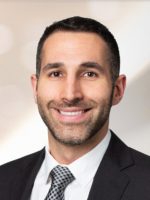Cardiology procedures in the ambulatory surgery center (“ASC”) setting are growing rapidly. According to MedPAC’s March 2021 report to Congress, there were 88 single-specialty cardiology ASCs billing Medicare in 2019 (the latest year with reportable data), which is a significant uptick from just 18 such ASCs in 2017.[1] Despite demonstrable growth, it is important to note that this growth is occurring from a smaller base relative to other single-specialty ASCs. For example, there were more than 1,000 gastroenterology ASCs in 2019.[2] However, while ASCs accounted for an estimated 10% of all cardiology procedures in 2018, Bain & Company expects that they will account for 30-35% of such procedures by the mid-2020s as lower costs and favorable outcomes drive change.[3]
We have set forth below certain considerations for various stakeholders who are reviewing cardiology in the ASC setting.
CMS is a Catalyst for Change
As is often the case, cardiology ASC growth is propelled by changes in the reimbursement policies set forth by the Centers for Medicare & Medicaid Services (“CMS”). Specifically, in 2018, CMS added 17 cardiology-related procedures to the 2019 list of Medicare-covered ASC procedures, many of which were surgery-like procedures.[4] Then in 2019, CMS issued a final rule authorizing the delivery of percutaneous coronary interventions (“PCI”) in the ASC setting.[5] For stakeholders who are considering a shift towards ASC care, it may be important to analyze the procedure and payor mix of a group’s cardiologists and to stay informed regarding the latest developments from CMS.
State Laws May Impose Barriers
State law largely governs the licensure and regulation of ASCs. Despite reimbursement updates from CMS, many states pose specific and unique challenges with respect to the shift towards ambulatory cardiology care. Certificate of Need states requires lengthy application processes and determinations to greenlight a new ASC or new service lines. Some states may prohibit the provision of certain CMS-approved ASC procedures in the ASC setting. For example, New York prohibits PCI procedures in ASCs.[6] And yet, other states may require specific site, build-out, and other requirements that may affect various structure models. As an example, many operators utilize an ASC/office-based laboratory (“OBL”) hybrid model pursuant to which a facility alternates as an ASC on some days and an OBL on other days. The hybrid model provides the benefits of operational efficiency with the flexibility to allow operators to begin receiving facility fees from certain payors in connection with certain procedures. However, the availability of the hybrid model, and the requirements necessary for operation, are highly state-specific.
Relationships Matter
Cardiology ASC growth is often compared to the ASC growth stories experienced in other specialties such as orthopaedic surgery and spine. However, each field offers unique circumstances involving relationships among various stakeholders. Such circumstances and relationships may affect the speed of growth and the structures contemplated to shift from the inpatient setting to the ASC. For example, approximately 70% of cardiology groups are employed by health systems.[7] In contrast, as of 2014, only 15% of orthopaedic surgeons were employed by hospitals.[8] A consequence of the high degree of health system employment among cardiologists is that health systems may play a more material role in in the shift to the ASC setting, including with respect to ASC structures, personnel, billing, compliance and related matters.
We believe that cardiology ASC growth will continue in the next few years, and we will continue to provide updates regarding these matters.
[1] https://www.ghadvisors.net/research-reports/gha-the-rise-of-the-cardiology-asc/.
[2] https://www.ghadvisors.net/research-reports/gha-the-rise-of-the-cardiology-asc/.
[3] https://www.bain.com/insights/ambulatory-surgery-center-growth-accelerates-is-medtech-ready/.
[4] https://citoday.com/articles/2019-jan-feb/2019-cms-reimbursement-and-your-ambulatory-strategy.
[6] https://regs.health.ny.gov/content/section-40529-cardiac-services.



 />i
/>i

